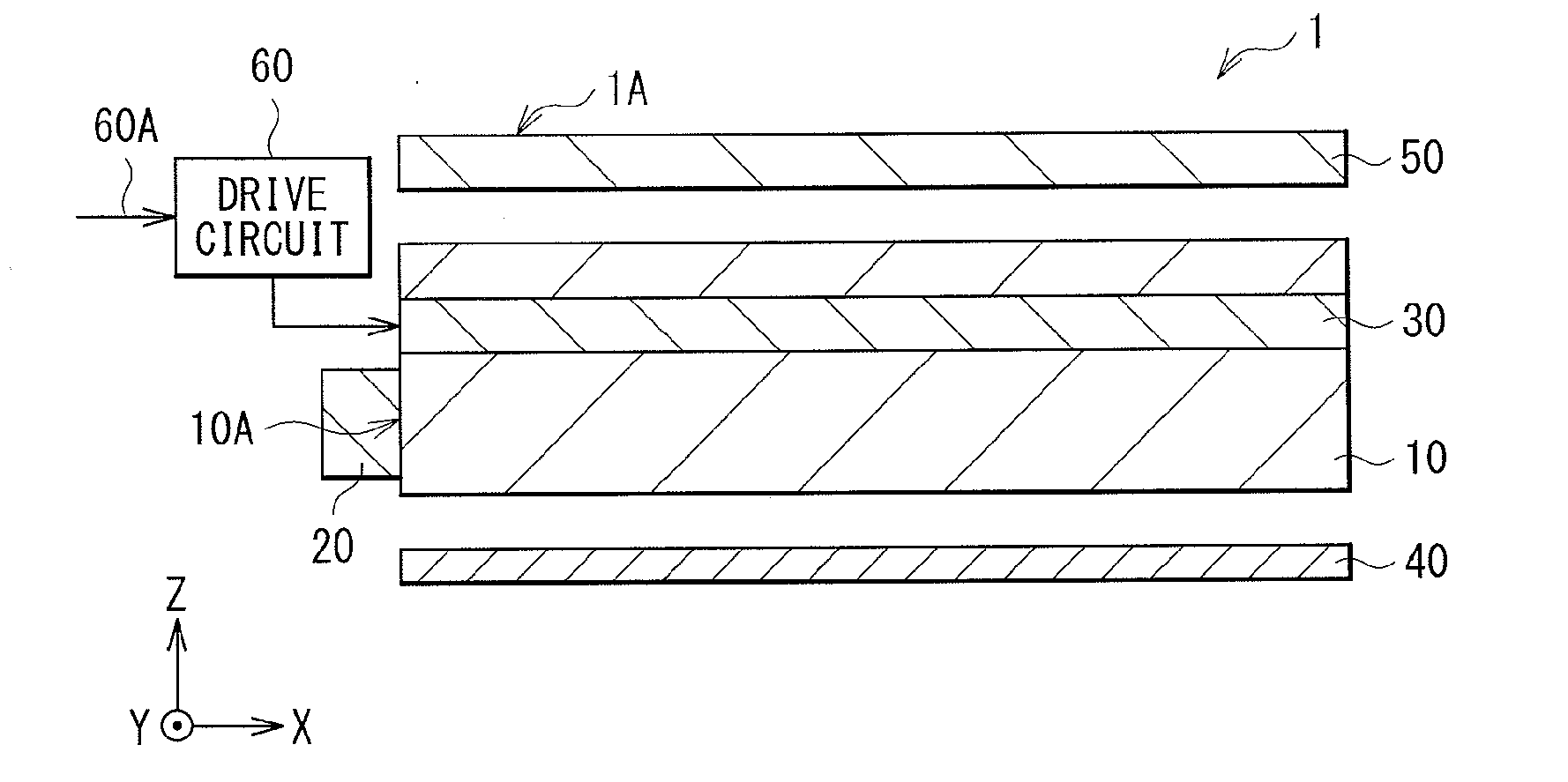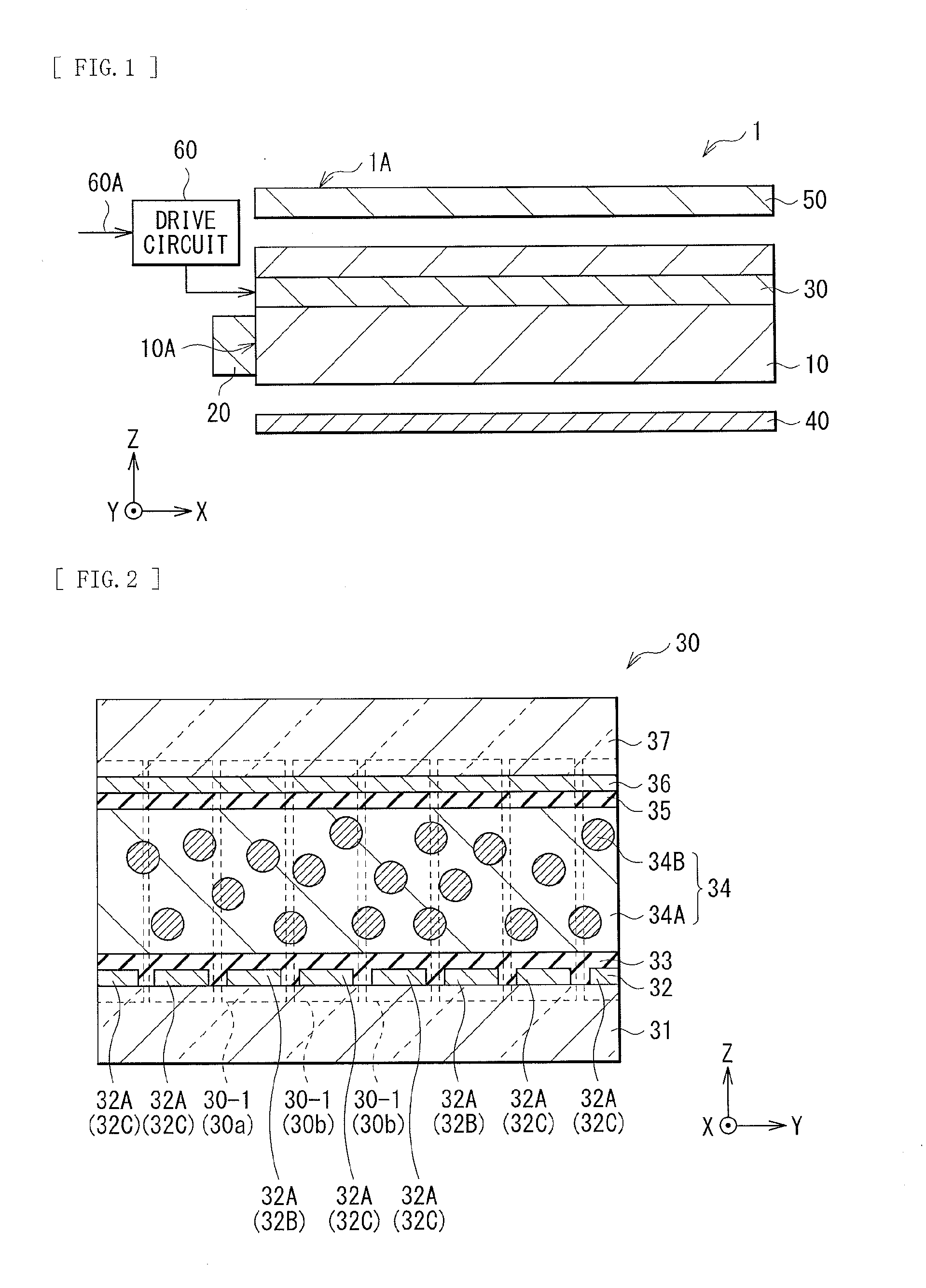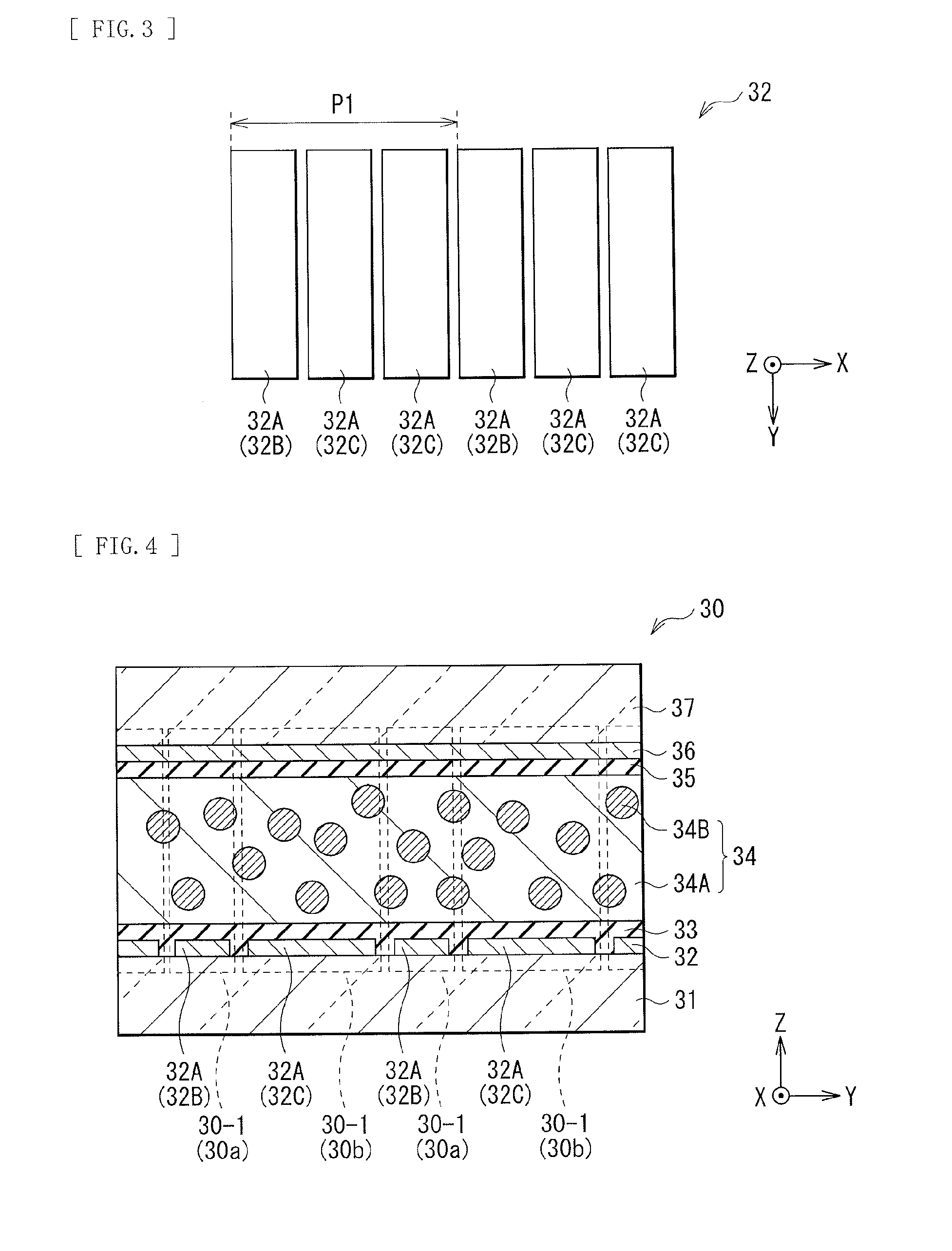Display apparatus and illumination unit
a technology of illumination unit and display apparatus, which is applied in the direction of lighting and heating apparatus, static indicating devices, instruments, etc., can solve the problems of reducing the luminance of display, and achieve the effect of increasing the light amount and high luminance in the display imag
- Summary
- Abstract
- Description
- Claims
- Application Information
AI Technical Summary
Benefits of technology
Problems solved by technology
Method used
Image
Examples
first embodiment (
1. First Embodiment (Illumination Unit)
[0097]An example in which a lens sheet having a triangular cross-section is provided on a light guide plate
second embodiment (
2. Second Embodiment (Illumination Unit)
[0098]An example in which a lens sheet having a cylindrical cross-section is provided on the light guide plate
3. Modifications of Above-described Respective Embodiments (Illumination Unit)
4. Third Embodiment (Receiver-side Unit)
[0099]An example in which the above-described illumination unit is used as a backlight of a receiver-side unit
PUM
| Property | Measurement | Unit |
|---|---|---|
| base angle | aaaaa | aaaaa |
| temperature | aaaaa | aaaaa |
| size | aaaaa | aaaaa |
Abstract
Description
Claims
Application Information
 Login to View More
Login to View More - R&D
- Intellectual Property
- Life Sciences
- Materials
- Tech Scout
- Unparalleled Data Quality
- Higher Quality Content
- 60% Fewer Hallucinations
Browse by: Latest US Patents, China's latest patents, Technical Efficacy Thesaurus, Application Domain, Technology Topic, Popular Technical Reports.
© 2025 PatSnap. All rights reserved.Legal|Privacy policy|Modern Slavery Act Transparency Statement|Sitemap|About US| Contact US: help@patsnap.com



